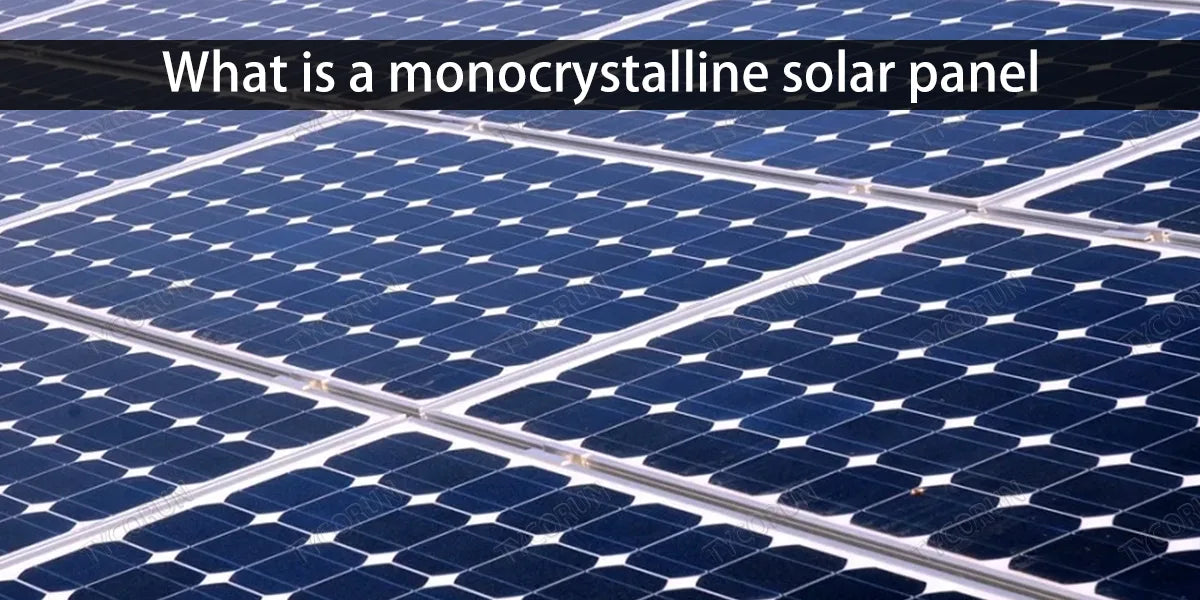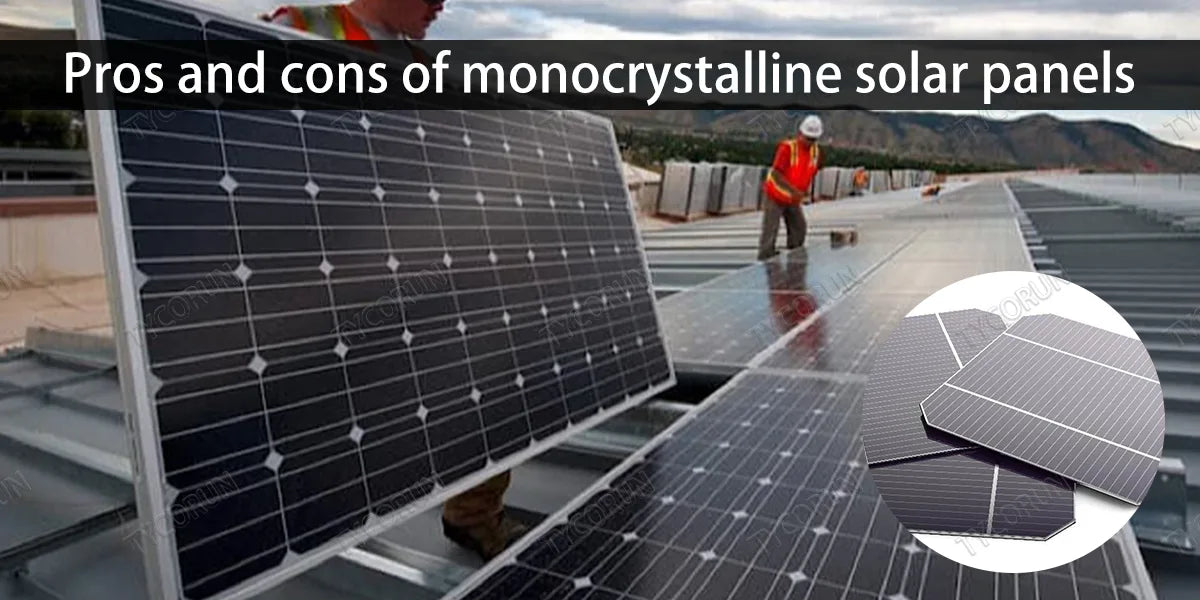
Main content:
Solar power generation is also called photovoltaic power generation, and the penetration rate is relatively higher than before, which is really much higher. The sharp drop in PV costs has also allowed China's PV market to grow. Of course, we are most familiar with home energy storage.
But faced with a wide variety of panel brands and different types of panels, what should we choose? The type of solar panel depends mainly on the material of the solar battery, and the solar cell in the monocrystalline silicon solar panel is composed of a single crystal. The following article focuses on monocrystalline solar panel.
1. What is a monocrystalline solar cell
The photoelectric conversion efficiency of monocrystalline silicon solar cells is about 18%, and the highest is 24%, which is the highest photoelectric conversion efficiency of all types of solar cells(12v 100ah lithium ion batteries).
However, due to the high cost of monocrystalline silicon, tempered glass and waterproof resin are generally used for packaging. As a result, it is robust and has a service life of up to 25 years.
2. What is a monocrystalline solar panel
Monocrystalline solar panel is made of monocrystalline silicon rods, which have less material loss during the manufacturing process. Due to the high purity and homogeneous structure of the material, monocrystalline solar panel performs well at both high temperatures and low emissivity.

At the same time, monocrystalline solar panel can generate voltage when sunlight irradiates, and their subtle patterns have lower reflectivity, making it easier to absorb solar energy, so the conversion efficiency is higher.
3. Composition of monocrystalline solar panels
The components of the monocrystalline panel are the same, except that the cells are made of monocrystalline silicon. The advantage of monocrystalline silicon is that it has a higher conversion rate than polysilicon, and can generate more electricity in the same area, reducing land rent and bracket costs.
And in terms of performance (attenuation, etc.), it is slightly better than polysilicon, but in terms of manufacturing cost, it is higher than polysilicon. Therefore, the price of monocrystalline panels is higher than that of polycrystalline silicon panels. There is no requirement for the type of panel, then the price is more suitable.
If the space is limited and you want to install more capacity, you should choose monocrystalline. If the lighting is not good, there are shadows all year round, and the film is not deliberately pursued. Hope the above can be helpful to you.
If you need high-efficiency solar panels, and you have a good budget, you can choose monocrystalline solar panel. If you need to strike a balance between price and performance, polycrystalline solar panels can be used in some low-light environments.
4. Pros and cons of monocrystalline solar panels
● Advantages- High efficiency: The power generation efficiency is up to 20%, which is one of the most efficient solar cells.
- Good stability: It can withstand extreme conditions such as high temperatures and strong light, and has a long life.
- Beautiful: The color is consistent and the appearance is beautiful.

- High manufacturing costs: The manufacturing process is relatively complex and costly.
- Limited by light angle: the best effect can only be played under high direct light, and the effect of other angles will be significantly reduced.
5. Power generation efficiency of monocrystalline solar panels
The maximum conversion efficiency of monocrystalline solar panels can reach about 20%, which are considered as the high efficiency solar panels on the market.
In addition, due to the optimization of its manufacturing process and the advancement of technology, the power generation efficiency of monocrystalline solar panel is constantly improving.
The manufacturing process of monocrystalline solar panel is relatively complex, but it has always been a mainstream product in the field of solar power generation due to its high photoelectric conversion efficiency, good stability and long life.
6. Monocrystalline vs polycrystalline solar panels
Compared to polycrystalline silicon solar panels, it can achieve 50 to 60 percent higher power capacity for the same installation area, without having to add a higher upfront cost. In the long term, a power station with higher capacity will be more beneficial to lower electricity bills.
This is now the mainstream solar panel. Both of these crystalline panels are ideal for rooftop solar battery(12 volt 200ah lithium battery) systems. The main differences are as follows:
- Appearance
Monocrystalline silicon dark blue, almost black, polycrystalline silicon sky blue, bright color, monocrystalline cell four corners arc-shaped, polycrystalline cell square.
- Conversion rate
Theoretically, the efficiency of monocrystalline is slightly higher than that of polycrystalline, some data show 1%, and some data show 3%, but this is only a theory, there are many factors that affect the actual power generation, and the role of conversion efficiency is smaller than that of ordinary people.

- Cost and manufacturing process
The cost of monocrystalline plates is higher and the production process is more complex, while the manufacturing cost of polycrystalline plates is lower than that of monocrystalline plates, and the production process is relatively simple.
- Power generation
The biggest impact on power generation is not mono and multi, but packaging, process, material and application environment.
- Attenuation
Measured data show that monocrystalline and multicrystalline have their own advantages, and relatively speaking, product quality (tightness, presence of impurities, and whether there is cracking) has a greater impact on attenuation.
- Sunlight characteristics
If the sunlight is sufficient, the monocrystalline silicon has high conversion efficiency and large power generation. At low illumination, polysilicon is more efficient.
- Durability
Monocrystalline plates typically have a long lifespan, with some manufacturers guaranteeing their performance for more than 25 years.
Monocrystalline solar panel has a higher conversion efficiency, but they are also relatively expensive. Polycrystalline solar panel is less expensive, but conversion efficiency is also affected. Which type of solar panel to choose needs to be chosen according to the actual needs.
7. Conclusion
Monocrystalline solar panel is a kind of solar photovoltaic equipment made based on monocrystalline silicon materials, which is commonly used in solar photovoltaic power generation system.
Monocrystalline solar panels consist of multiple monocrystalline silicon solar cells, each of which is covered with transparent anti-reflective glass and supported and protected by an aluminum frame.
Related articles: silicon carbide inverter, Polycrystalline vs single crystal, top 5 solar panel brackets companies
















